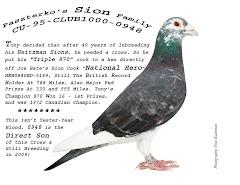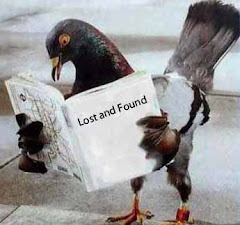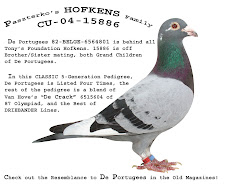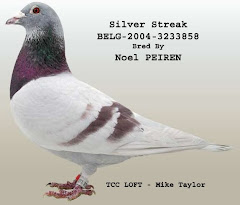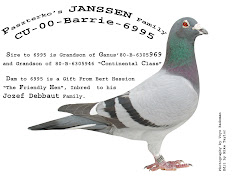The New York Times
By HENRY FOUNTAIN
Published: January 18, 2005
Homing pigeons are renowned for their ability to navigate over long distances, and after decades of study scientists are pretty sure they know how the birds do it. They use their sense of smell to figure out where they are and the position of the sun to determine the direction they must fly.
But less is known about how pigeons navigate when they are close to home, in more familiar surroundings. Many researchers have thought that in such situations the birds must rely, at least partly, on visual cues.
"There's been controversy about whether familiar landmarks have been used," said Jessica Meade, a doctoral student in the Animal Behavior Research Group at the University of Oxford in England. "Because there was no tracking of the birds along the homeward route, the hypotheses aren't very clear."
Ms. Meade and two colleagues, Dr. Dora Biro and Dr. Tim Guilford, set out to rectify that situation, using small Global Positioning System loggers attached to the backs of 15 homing pigeons. These devices, which weigh about an ounce, use satellite signals to record precise location fixes every second.
The researchers released the birds about three miles from home, and each bird had about 20 flights from the same point. The results are published in Proceedings B, a journal of the Royal Society.
At first, the researchers found, the birds' routes were highly variable. But after a number of flights the birds began to follow the same path from flight to flight, even though they were not necessarily the most direct routes home.
This route stereotypy, as it is called, implies that the birds use visual cues to navigate: they follow the same cues in order to reduce the memory load on their brains.
"We were also surprised that the routes were longer than they needed to be," Ms. Meade said. This implies that the pigeons use a chain of landmarks by themselves or in combination with compass bearings, but that they do not integrate direction and distance. If they did, Ms. Meade said, they would realize their routes are not the most efficient ones.
Whatever the precise method, the work suggests that homing pigeons shift from primarily compass navigation to visual navigation when they get near their home.
"It seems like they use a different strategy when they are very familiar with a task," Ms. Meade said.
Read more ...








